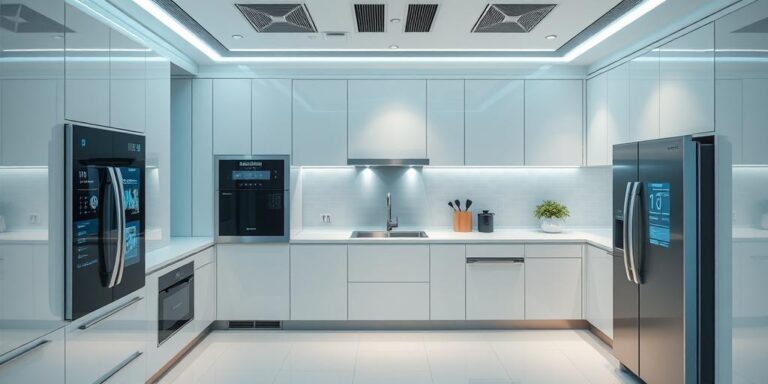The Future of Smart Appliances: AI and Connectivity (2026)
As we look ahead to 2026, the landscape of home appliances is undergoing a dramatic transformation, driven by advancements in artificial intelligence (AI) and seamless connectivity. These innovations promise to enhance convenience, efficiency, and sustainability in our daily lives.
AI-Powered Personalization
AI is at the heart of the next generation of smart appliances, enabling personalized experiences tailored to individual needs and preferences. Imagine a refrigerator that not only tracks its contents and expiration dates but also suggests recipes based on available ingredients and dietary requirements. Ovens can automatically adjust cooking times and temperatures based on the type of dish and desired level of doneness, ensuring perfect results every time. Washing machines can optimize wash cycles based on fabric type and soil level, minimizing water and energy consumption.
Seamless Connectivity and Integration
Connectivity is another key aspect of the future of smart appliances. Through seamless integration with home networks and IoT platforms, appliances can communicate with each other and with other smart devices in the home. This allows for coordinated operation and remote control. For example, a smart thermostat can adjust the temperature based on the oven’s operation, or a smart lighting system can dim the lights when the TV is turned on. Users can monitor and control their appliances from anywhere using a smartphone or voice assistant.
Predictive Maintenance and Enhanced Efficiency
AI and connectivity also enable predictive maintenance, allowing appliances to anticipate potential issues and schedule repairs before they lead to breakdowns. Sensors embedded in appliances can monitor performance and detect anomalies, alerting users or service technicians to potential problems. This reduces downtime and extends the lifespan of appliances. Furthermore, smart appliances can optimize energy and water consumption, reducing utility bills and minimizing environmental impact. For example, a smart dishwasher can automatically adjust water usage based on the number of dishes and soil level, while a smart water heater can learn usage patterns and optimize heating schedules.
Voice Control and Automation
Voice control is becoming an increasingly popular way to interact with smart appliances. Users can use voice commands to turn appliances on or off, adjust settings, and monitor performance. This is particularly useful for hands-free operation in the kitchen or when multitasking. Automation is another key benefit of smart appliances. Users can create custom routines that automate common tasks, such as preheating the oven at a specific time or starting the coffee maker in the morning. This saves time and effort, allowing users to focus on other things.
Security and Privacy Considerations
As smart appliances become more connected and integrated into our lives, it is important to address security and privacy concerns. Manufacturers are implementing robust security measures to protect against unauthorized access and data breaches. This includes encryption, authentication, and regular security updates. Users also need to be aware of the data that their appliances collect and how it is used. Transparency and control over data privacy are essential for building trust and ensuring that smart appliances are used responsibly.
Conclusion
The future of smart appliances is bright, with AI and connectivity driving innovation and transforming the way we interact with our homes. These advancements promise to enhance convenience, efficiency, and sustainability, making our lives easier and more enjoyable. As the technology continues to evolve, we can expect even more exciting developments in the years to come.




